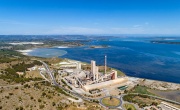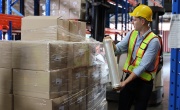Zero Waste Scotland's new LCA tool measures wider environmental impact of waste
Scottish Waste Environmental Footprint Tool (SWEFT) provides a comprehensive analysis of the life-cycle impacts of household waste across six key environmental indicators, revealing the most problematic materials and the importance of waste reduction.
 Zero Waste Scotland has published the summary results for its pioneering Scottish Waste Environmental Footprint Tool (SWEFT), offering an unprecedented look at the life-cycle environmental impacts of Scotland's household waste. The tool, an evolution of the earlier Carbon Metric, goes beyond carbon to assess household waste's impact in terms of biodiversity loss, air pollution, water consumption, mineral resource scarcity, and land use.
Zero Waste Scotland has published the summary results for its pioneering Scottish Waste Environmental Footprint Tool (SWEFT), offering an unprecedented look at the life-cycle environmental impacts of Scotland's household waste. The tool, an evolution of the earlier Carbon Metric, goes beyond carbon to assess household waste's impact in terms of biodiversity loss, air pollution, water consumption, mineral resource scarcity, and land use.
Developed to capture the wider environmental impacts, SWEFT employs life cycle assessment (LCA) methodology to quantify the consequence of waste during production, transport, recycling, and disposal. In doing this, it aims to capture the embodied impacts of wasted materials – the energy and resources used in their manufacture – which are often overlooked in waste management analyses.
"SWEFT provides a holistic understanding of the environmental damage caused by household waste," explains Donald Chapman, Environmental Analyst at Zero Waste Scotland and lead author of the report. "By considering multiple impact categories and embodied impacts, it highlights the importance of waste reduction and material efficiency in addressing the ecological emergency."
Key findings from the analysis of data from 2022 reveal that textiles, food, electronics, plastic, and paper/cardboard are the most environmentally problematic household waste streams across the studied impact categories:
- Climate change: Textiles, food, plastic, paper, and discarded equipment (mainly waste electronics) are the top five contributors, with production and manufacturing dominating the impacts.
- Biodiversity loss: Food waste accounts for 43 per cent of biodiversity impacts, followed by textiles at 17 per cent, mainly due to embodied impacts from production. The report notes that according to the latest food waste data for Scotland, approximately 60 per cent of food waste is avoidable. According to the findings, the biodiversity loss from Scotland’s household waste in 2022 is estimated to be the equivalent to the loss of 52 species.
- Air pollution: Textiles, discarded equipment, food, plastic, and paper/cardboard are significant contributors, largely owing to embodied impacts.
- Mineral resource scarcity: Discarded equipment dominates at 88 per cent of impacts, reflecting the depletion of metal resources in electronics production. The report stresses that discarded equipment, consisting primarily of waste electronic and electrical equipment (WEEE), is the only waste category with a substantial impact on mineral resource scarcity, highlighting the importance of electronics recycling and recovery.
- Water consumption: Textile and food waste together make up 81 per cent of water consumption impacts.
- Land use: Food waste is the primary driver of land use impacts through habitat loss and soil disturbance. As with biodiversity loss, the report notes that recycling food waste does little to offset these impacts, as food waste is not recycled into new food but rather used for energy or as compost/fertiliser. Preventing food waste is crucial to mitigating its land use impacts.
Across all categories, embodied impacts from production emerge as the dominant factor, emphasising the need to reduce waste at the source. Recycling plays a valuable role in offsetting some impacts, particularly for plastics, metals, paper, and textiles, by displacing virgin material production. However, the results underscore that waste prevention and material efficiency should be the priority.
The 2022 household waste data, provided by the Scottish Environment Protection Agency (SEPA), reveals that food, paper/cardboard, garden waste, plastics, and glass are the largest waste streams by weight. Despite their substantial tonnages, recycling rates for food, paper/cardboard, and plastics remain below 50 per cent, indicating significant room for improvement.
SWEFT's LCA methodology encompasses production, transport to retail, waste collection, recycling, and disposal. It utilises data primarily from the EcoInvent database and employs the ReCiPe 2016 impact assessment method to quantify midpoint indicators. The analysis excludes the environmental impacts associated with the use phase associated with each material, as this in many important respects does not have the same bearing on resource conservation - as, for instance, a washing machine will have a greater environmental footprint than a cardboard box while it is being used.
While SWEFT's findings are based on household waste and not a complete picture of household consumption, the embodied impacts it quantifies provide an indicator of some environmental effects of householders’ consumption.





